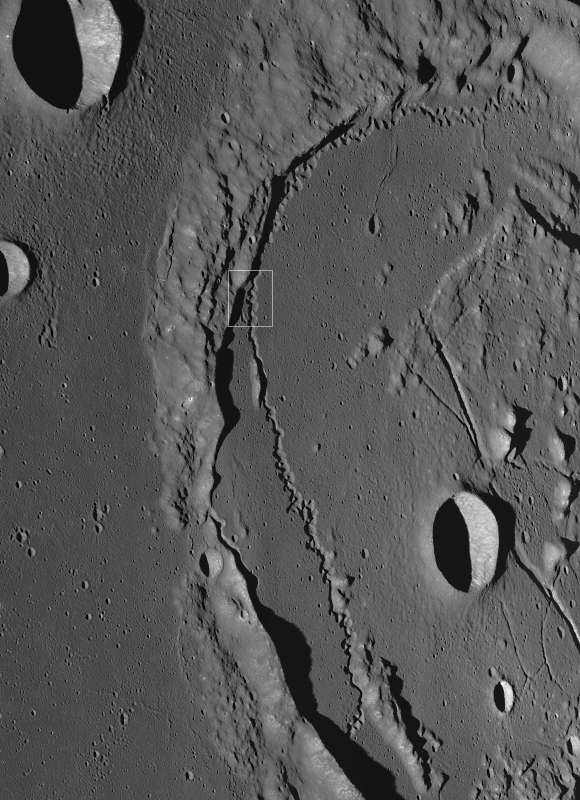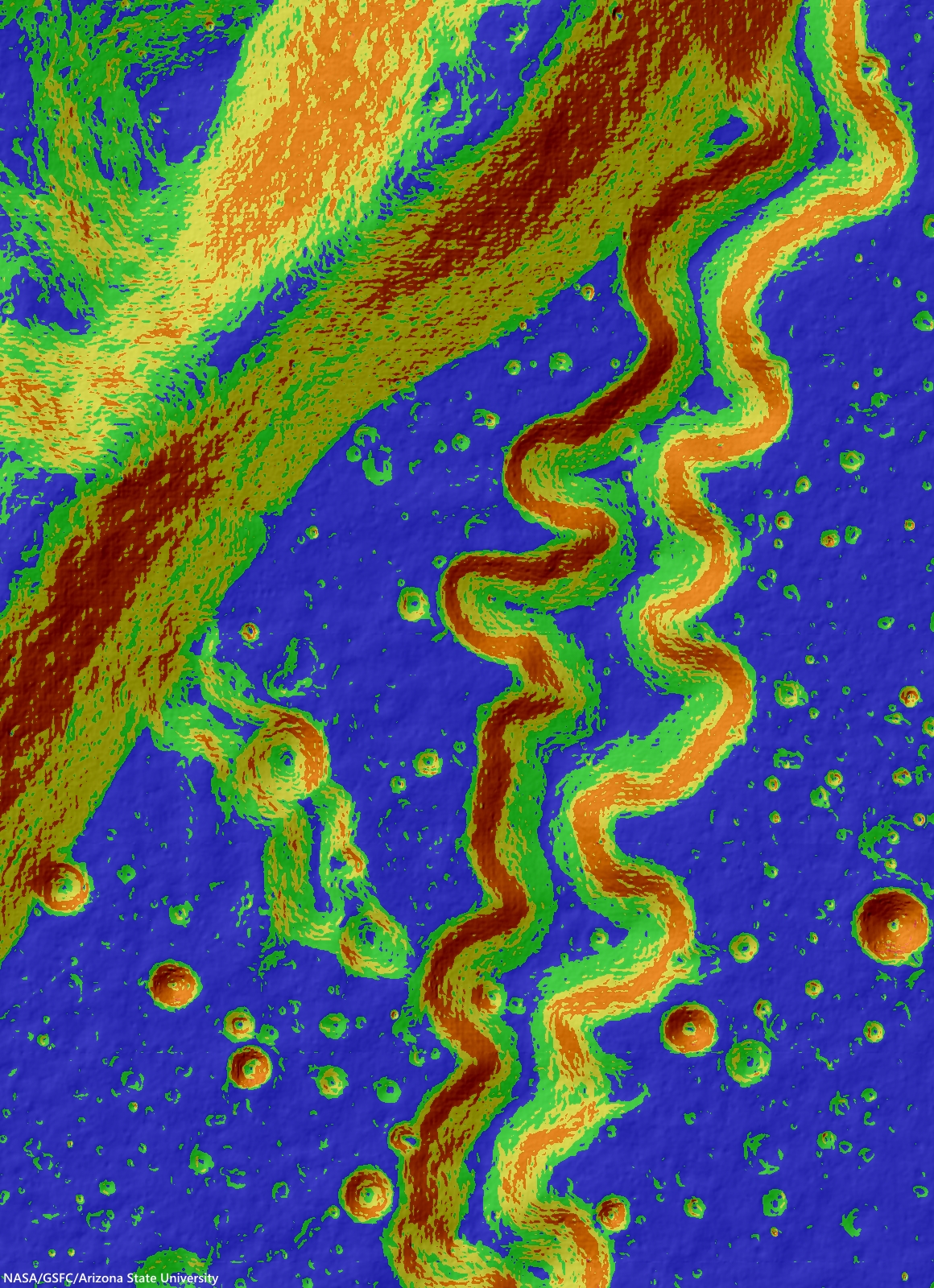Sinuous rilles, such as the one above, form through the flow of hot, turbulent lava.
Rilles can be found in many locations across the lunar surface and two very different mechanisms are generally thought to form them.
Mechanical erosion refers to the physical removal of material by the lava flow, similar to how rivers erode channels on Earth.
Alternately, some lavas are so hot that they partially melt the substrate, and deepen the channel through time. These processes on there own would both result in downcutting into the surface, but they were often simultaneously working to reshape the lunar surface.
Posidonius (95 km, 31.878°N, 29.991°E) exhibits several rilles of differing types, seen below (linear and sinuous).
Posidonius is a 95 km diameter crater on the northeastern margin of Mare Serenitatis. The floor of Posidonius exhibits a number of interesting geologic features. In the western portion of the floor, the sinuous rille from Today’s Featured Image winds its way through smooth plains that partially bury the crater wall.
In the eastern portion, the floor is fractured and tilted, similar to craters like Karpinskiy, creating a cliff that drops ~ 1 km to the smooth floor. When compared to the highlands, Posidonius has few craters superposed on its floor, like Posidonius A (11 km) & C (3.5 km), indicating that the floor of this crater is younger.
Check out the full slope map HERE.
Related Posts:
Kink in Rima Krieger
An observation post on the rim of Posidonius
Rimae Posidonius
Truncated rille in Jules Verne
Posidonius Y
Meanders in Posidonius
NAC DTM Posidonius
Rilles can be found in many locations across the lunar surface and two very different mechanisms are generally thought to form them.
Mechanical erosion refers to the physical removal of material by the lava flow, similar to how rivers erode channels on Earth.
Alternately, some lavas are so hot that they partially melt the substrate, and deepen the channel through time. These processes on there own would both result in downcutting into the surface, but they were often simultaneously working to reshape the lunar surface.
Posidonius (95 km, 31.878°N, 29.991°E) exhibits several rilles of differing types, seen below (linear and sinuous).
 |
| The vicinity of the northwest quadrant of Posidonius (95 km, 31.878°N, 29.991°E) has to have been imaged at high-resolution from more than one angle to enable interferometric determinations and to create the LROC NAC-derived Digital Terrain Models. Above the same general vicinity was imaged with spacecraft (and camera) slewed 59.03° from orbital nadir. LROC NAC observation M1096379115L, LRO orbit 13941, July 8, 2012; 82.31° sunset incidence, resolution 4 meters, from 145.49 km over 32.37°N, 17.41°E [NASA/GSFC/Arizona State University]. |
 |
| LROC NAC M1098658474R, LRO orbit 14260, August 3, 2012; 53.15° incidence angle, resolution 1.45 meters, from 143.74 km over 32.04°N, 28.43°E [NASA/GSFC/Arizona State University]. |
 |
| Huge reduction of the full-width mosaic of both the left and right frames from LROC NAC oblique observation M1096379115L. Area shown at full resolution further above, boxed in white [NASA/GSFC/Arizona State University]. |
Related Posts:
Kink in Rima Krieger
An observation post on the rim of Posidonius
Rimae Posidonius
Truncated rille in Jules Verne
Posidonius Y
Meanders in Posidonius
NAC DTM Posidonius



No comments:
Post a Comment